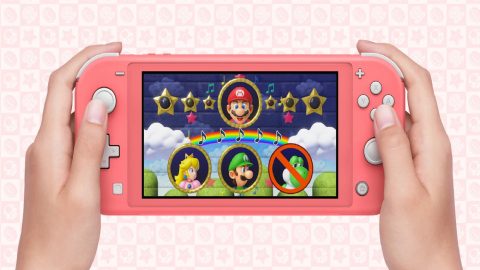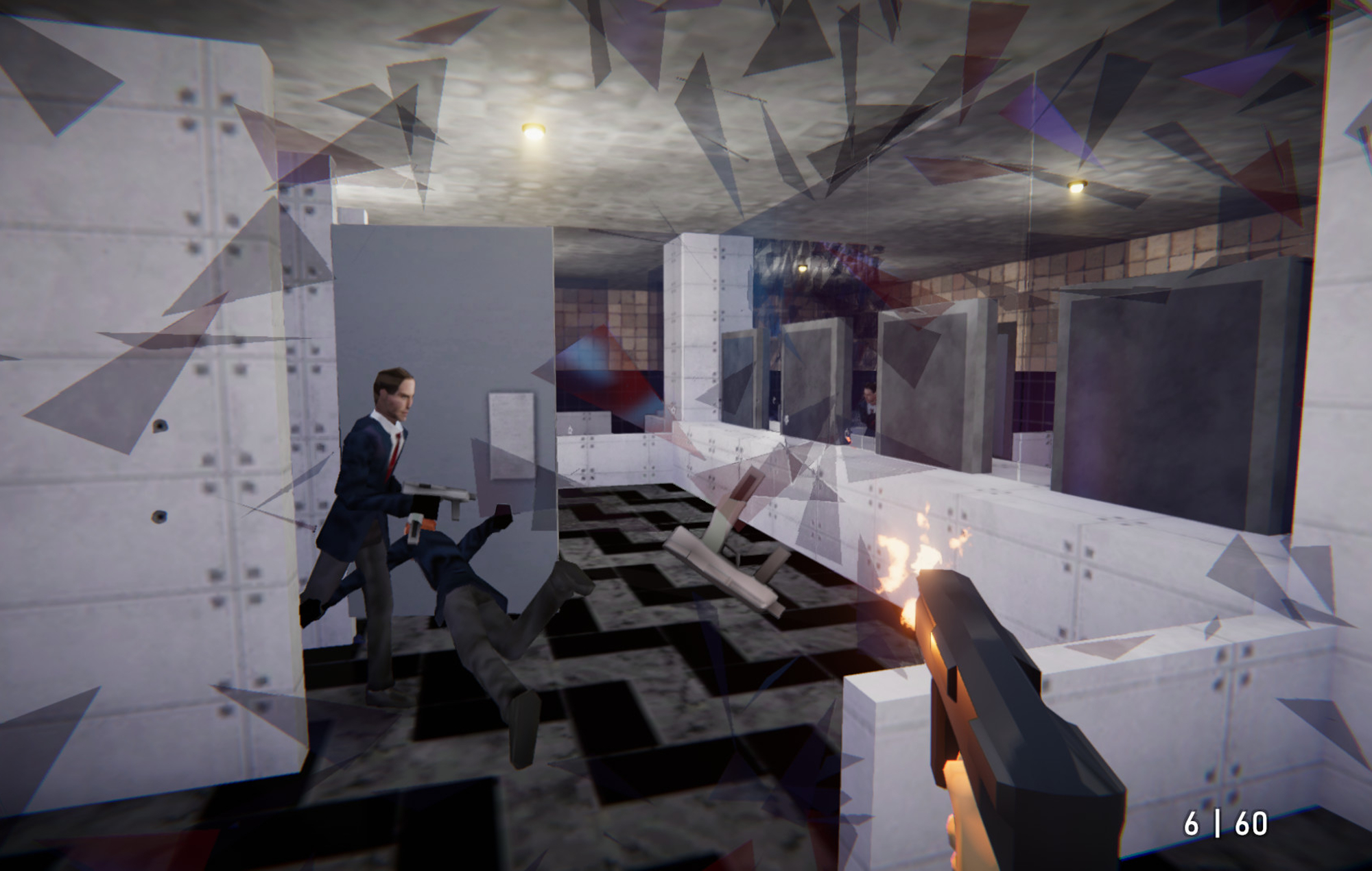
Even as I pulled the Nintendo Switch OLED from its box and unsheathed it from the plastic packaging, my stupid over-analytical brain couldn’t stop screaming: it’s no Switch Pro. After Nintendo’s launch I was still disappointed at the lack of any kind of performance upgrade, while many of the other specs seemed just as stale.
Thankfully my stupid brain realised it was being stupid and shut the ruddy heck up about one and a half seconds after my finger hit the Switch OLED’s power button. That startup screen, so grey and dull on the original IPS panel, was suddenly transformed into an ocean of glorious black on this all-new display. And then that menu screen, so crisp and colourful, a thing of beauty. Of course it was the same old menu screen that I’d already stared at hundreds of times before, but here it seemed so fresh, so shiny.
Imagine how good it is when you actually play a game on the bugger.
The screen size has increased for this OLED model, from 6.2-inches to 7-inches, although in turn the bezels surrounding it have shrunk. As a result this console basically sports the same dimensions as the original, with only a slight increase in weight. It’s certainly just as comfortable to clutch for a couple of hours, no hand cramps or other troubles.
Nintendo’s design looks and feels more premium than before, from the top vent which isn’t quite as gaping, to the reduced logo size around back. However, the biggest design improvement is that rear stand, which can be adjusted to any angle for comfortable viewing. This feels more robust and is ideal for propping up the Switch OLED during co-op sessions.

Those joycons look and feel just the same, although Nintendo has apparently made some subtle refinements since the original Switch went on sale. Will this help to prevent the pesky drift shenanigans? Well, only time will truly tell on that front.
Nintendo’s bundled dock has also changed up significantly. This bright white slab now includes a LAN port for wired internet, as well as an HDMI port and two USB ports. Cable tidying is also easier with this new dock, great news for neat freaks like myself.
So far, some nice refinements. But the true star here is that OLED panel, which is a massive improvement over the original Switch’s IPS screen. You may not realise the difference this OLED tech makes until you see the old console side-by-side with this new version. Suddenly, that old display looks about as appealing as a warm bag of sick. From the sharp contrast to the punchy, vibrant colour reproduction, those OLED visuals really shine in pretty titles like Metroid Dread.
Visibility is also improved when playing outdoors, one of my main complaints with the original Switch – and that’s despite the screen surface remaining super glossy. I still struggled to see what was going on in murkier moments of Metroid, as well as generally darker titles such as Doom 64. But it’s certainly a step in the right direction and will prove a godsend when the UK finally drags itself kicking and screaming into springtime.

That refresh rate tops off at 60Hz as before, so animations are pleasingly fluid, if not supremely smooth like supported games on the PS5 and Xbox.
However, while the size of the screen has increased for the Nintendo Switch OLED, that resolution remains rooted at 1280×720 pixels. This means the visuals are actually even less crisp than before, so the pixelation when you peer close is a little more obvious. It’s a real shame we didn’t get a Full HD screen for this model, but it wasn’t often that I found myself disappointed in the lack of fine detail.
Nintendo also tinkered with the stereo speakers for this model, so these now actually blast audio towards your face instead of out of the back end. This makes a real difference to the sound, which is louder and clearer than before. You’ve got a headphone jack if you want a more private gaming experience, while you can also actually hook up some Bluetooth phones now.
That said, the wireless streaming experience ain’t too hot on the Switch OLED. I found I had to manually reconnect my headphones every time that I booted up the Switch, while the audio was often crackly even with premium sets, along with a short but obvious lag. After trying a few different headphones and Bluetooth buds, I gave up and stuck with a wired pair instead.

As for performance, this definitely isn’t the Pro console we’ve been promised by various leaks and rumours. The Nintendo Switch OLED sports the same custom Nvidia Tegra chipset as before, with an identical amount of memory on board.
Most titles run with a perfectly smooth frame rate, especially Nintendo’s own fare. But some of the Switch’s more ambitious or less well optimised ports do still struggle in those more intensive moments. It’s just something us Switch owners have to endure, unfortunately.
Likewise, the battery capacity hasn’t increased at all for the OLED Switch model, yet the good news is that battery life has actually improved with this new console. That OLED screen is clearly a lot more energy efficient, so you can expect between 30 minutes to an hour of extra gaming or video streaming from a full charge.
One other area that has seen a slight improvement is the storage, with 64GB of the stuff shoved away in here. That’s double what you got on the first console, although it still gets filled up all too fast as some of the console’s biggest titles will happily gobble up 20-30GB by themselves.
Thankfully you can expand that storage by shoving a microSD memory card into the teeny slot, hidden away beneath the Switch OLED’s stand. Definitely get one of those ordered, if you want to download more than a handful of games.
So no, it’s no Pro model, but the Nintendo Switch OLED is still enough of an improvement to make me never want to return to the original handheld. Of course, it’s hard to justify a purchase if you still have a fully functional original Switch, unless you happen to have cash spaffing out of every orifice. Beyond that gorgeous display, the rest of the upgrades are minor refinements at best.
Nintendo Switch OLED models are now available to purchase, however they are currently out of stock on Nintendo’s UK site.
The Verdict
The Switch OLED doesn’t offer smoother gaming action and it can’t do anything new, but that revamped screen is a serious eye pleaser and a major improvement over the original.
Pros
- Beautiful display breathes fresh life into Switch games
- Improved speakers
- Longer battery life
Cons
- No performance upgrade
- Shonky Bluetooth connectivity
- Low screen resolution
The post Nintendo Switch OLED review: a worthy upscale that helps games shine appeared first on NME.








